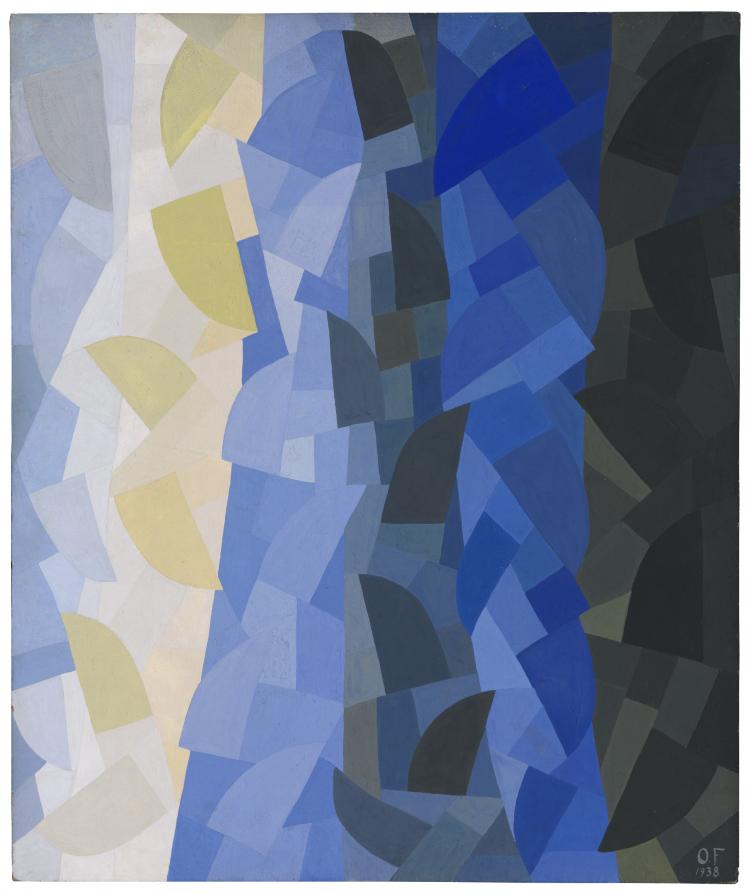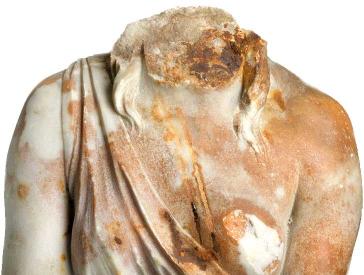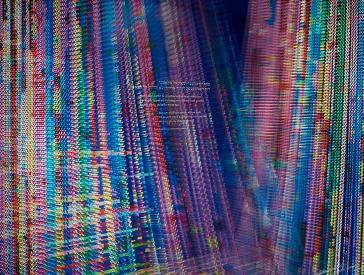Composition
Unusual Objects From Our Permanent Exhibition Tell Stories of Jewish Life
For Otto Freundlich, art was closely intertwined with the utopian vision of a new society::
“I fight for the liberation of people and things from the habits of ownership, and against everything that confines them and doesn’t reflect their true nature.”

Composition, Otto Freundlich (1878–1943), 1938, tempera on cardboard; Jewish Museum Berlin, accession 1999/179/0, photo: Jens Ziehe
Otto Freundlich’s works rouse viewers from their torpor. An active gaze is needed to set the “composition” in motion: to make it rise and fall as it emerges from triangular forms and contrasting colors. As our gaze shifts, the light and dark colors—white, yellow, brown, and black—illustrate the forces that are meant to shape the thoughts and actions of free people.
During the Nazi era, Freundlich’s art was branded “degenerate” and removed from German museums. The artist was deported to the Sobibor concentration camp, where he was murdered.
Find out more about this object in showcase.
Core Exhibition: 13 Objects – 13 Stories (13)
















